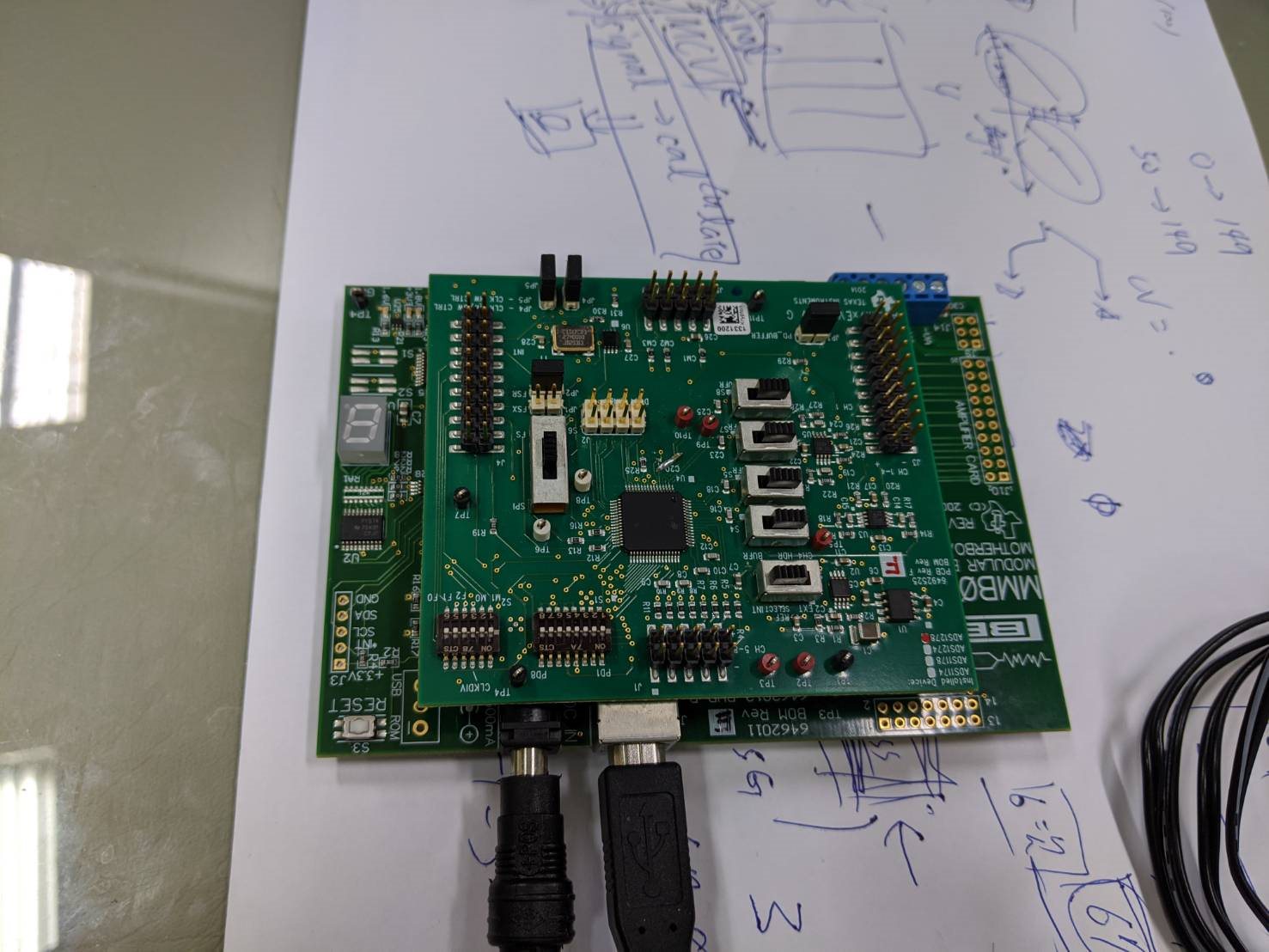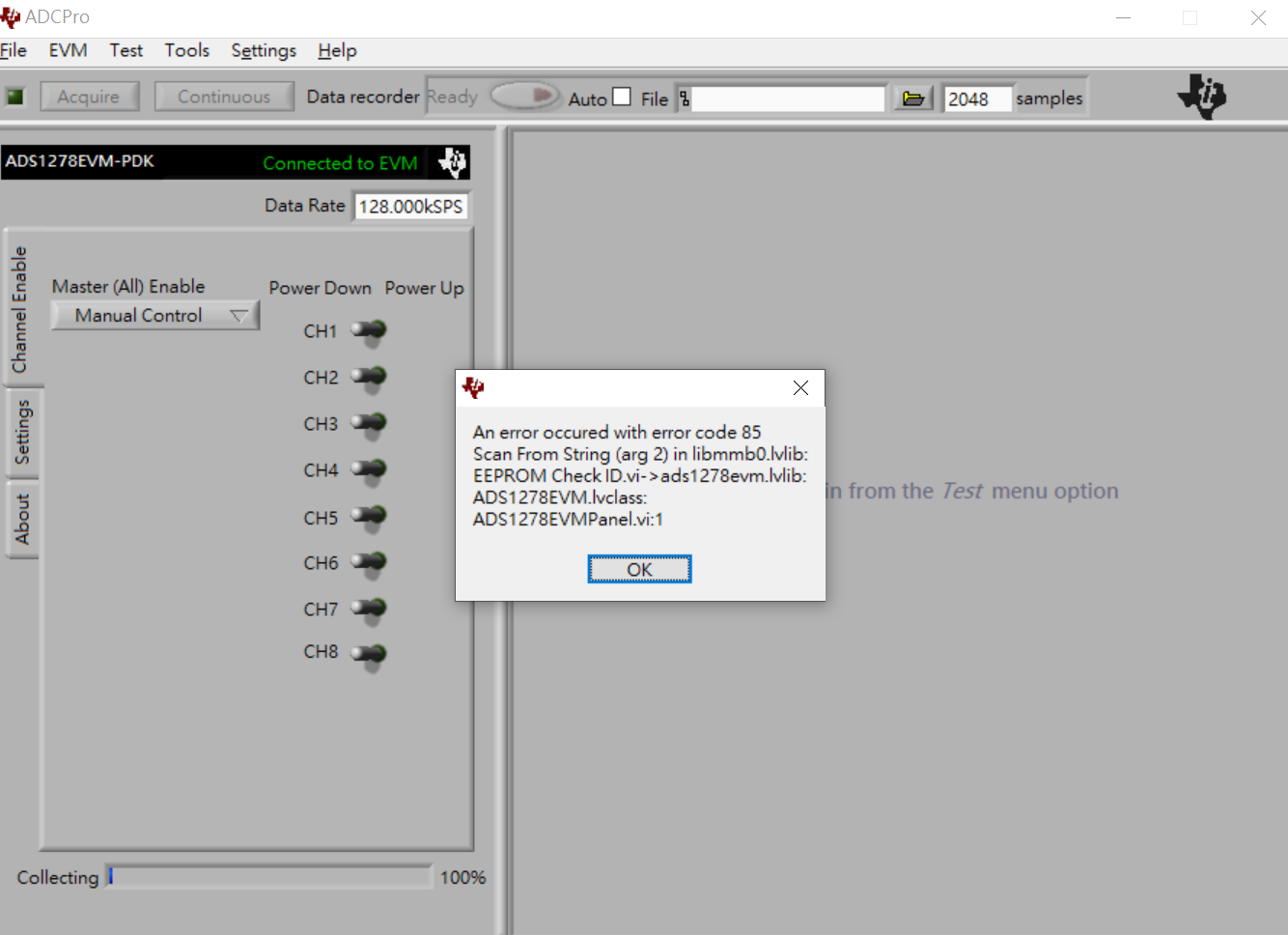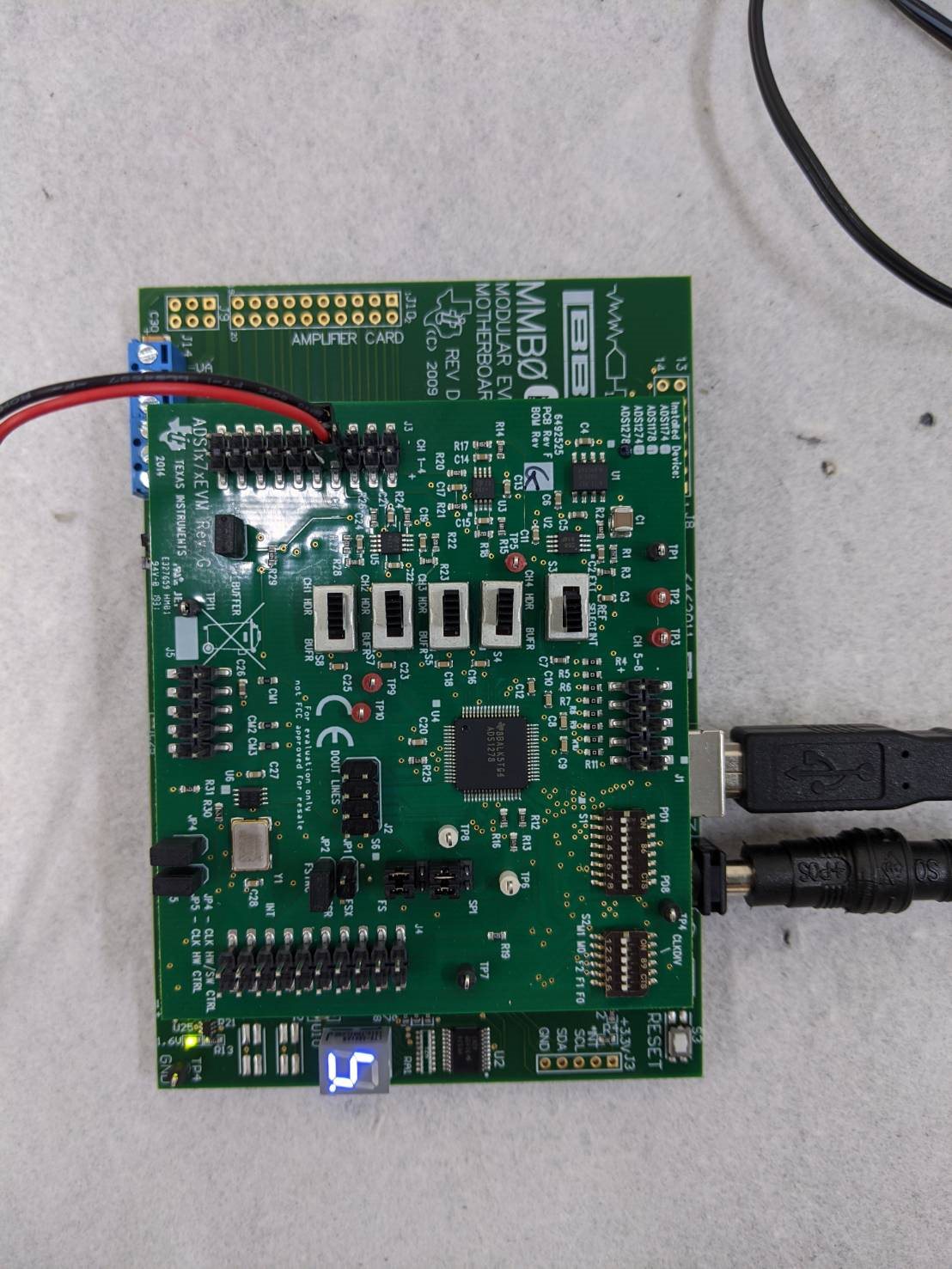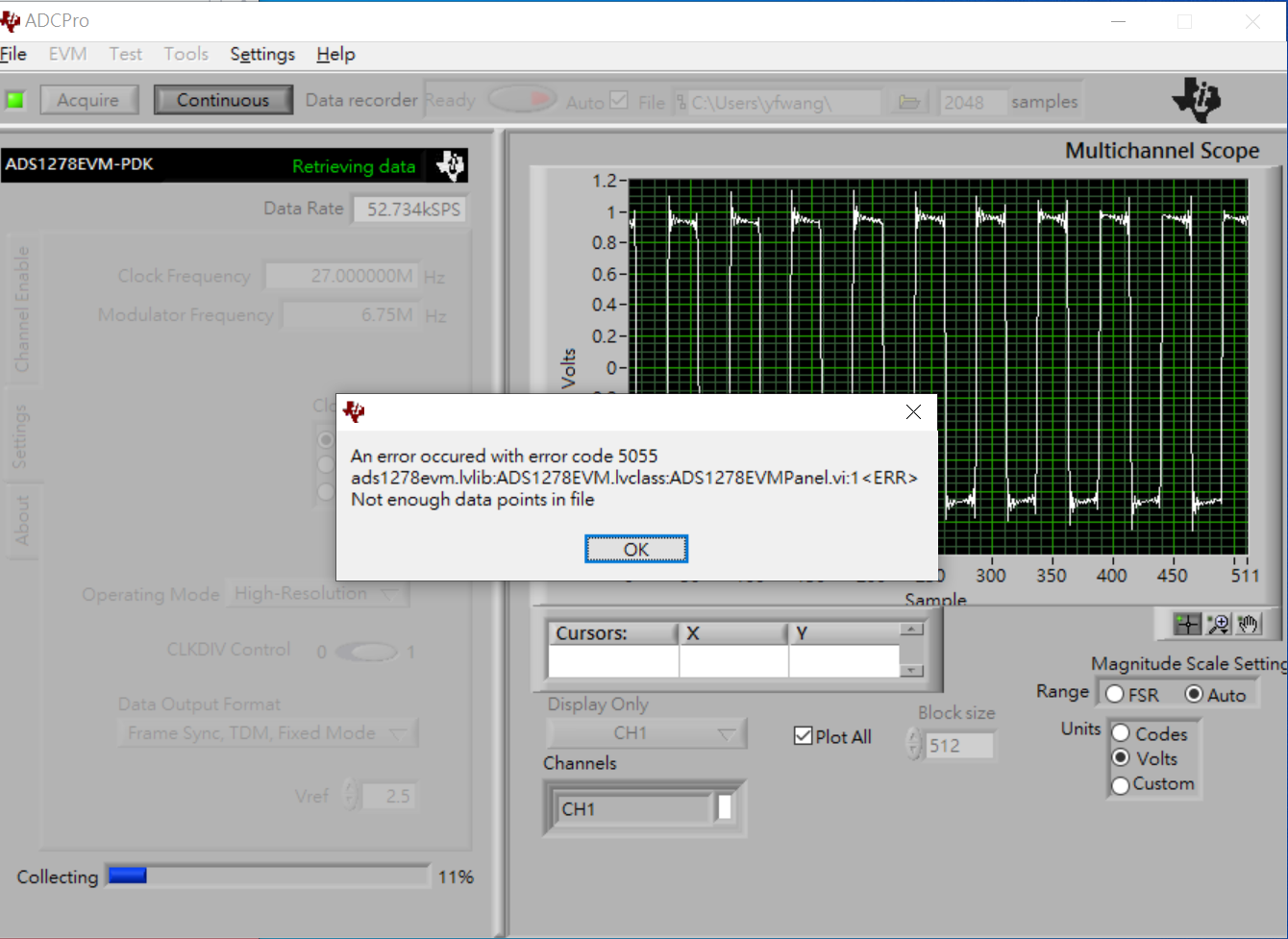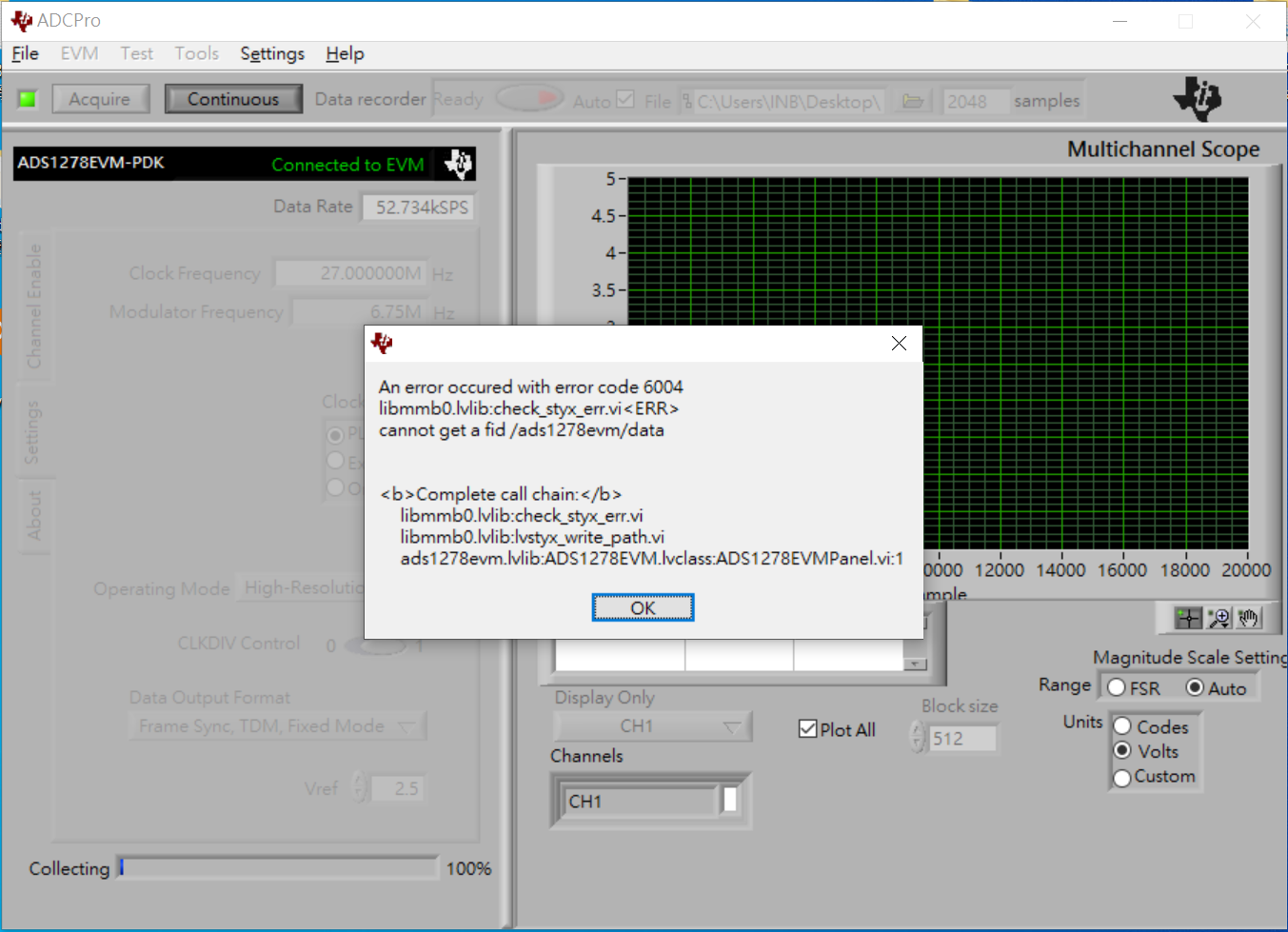Other Parts Discussed in Thread: ADCPRO, ADS1278, REG104
Hi,
I accidentally input the wrong power supply (12V/1A) to ADS1278EVM-PDK in my experiment.
And then it could not work, and ADC Pro show that unconnected hardware.
Even if I used the correct power supply (6V/0.5A) and press reset button, it still not work.
I guess the ADC component was damaged, and i want to send it back to the former factory and repair.
Can you please provide the process or information related to the repair ?
Thank you.


